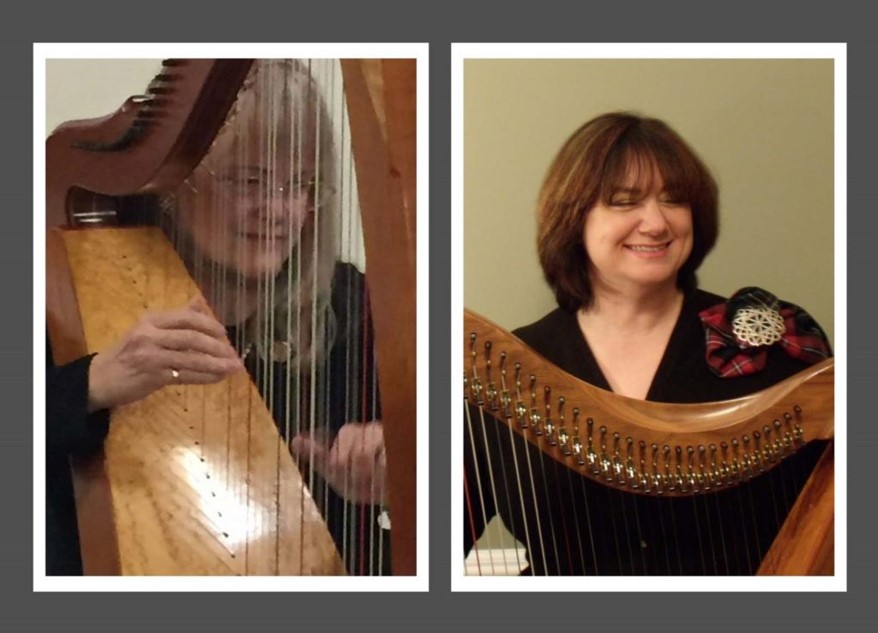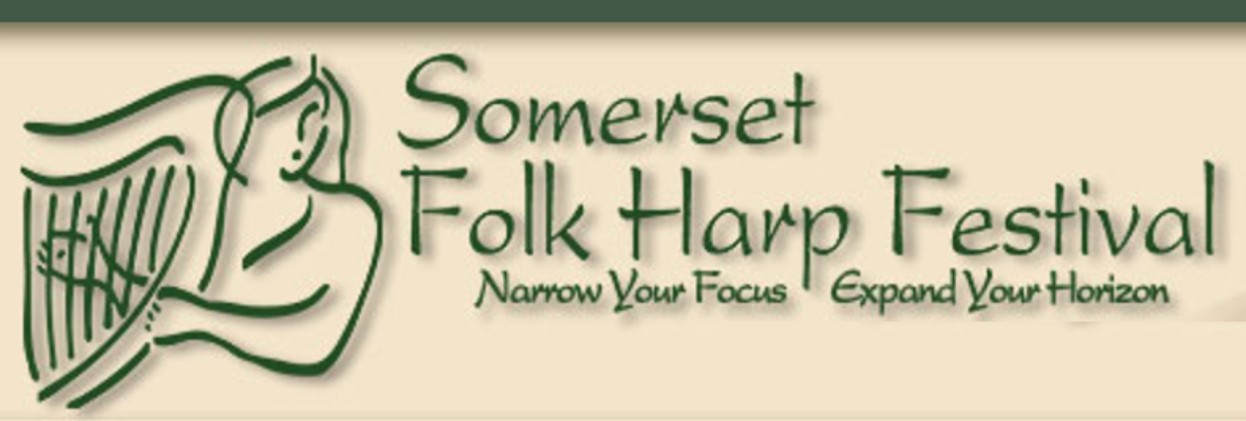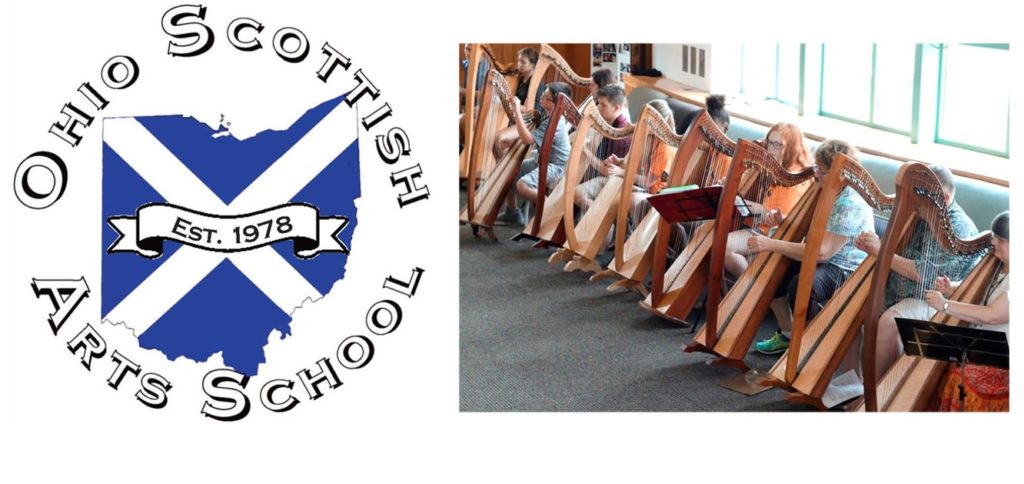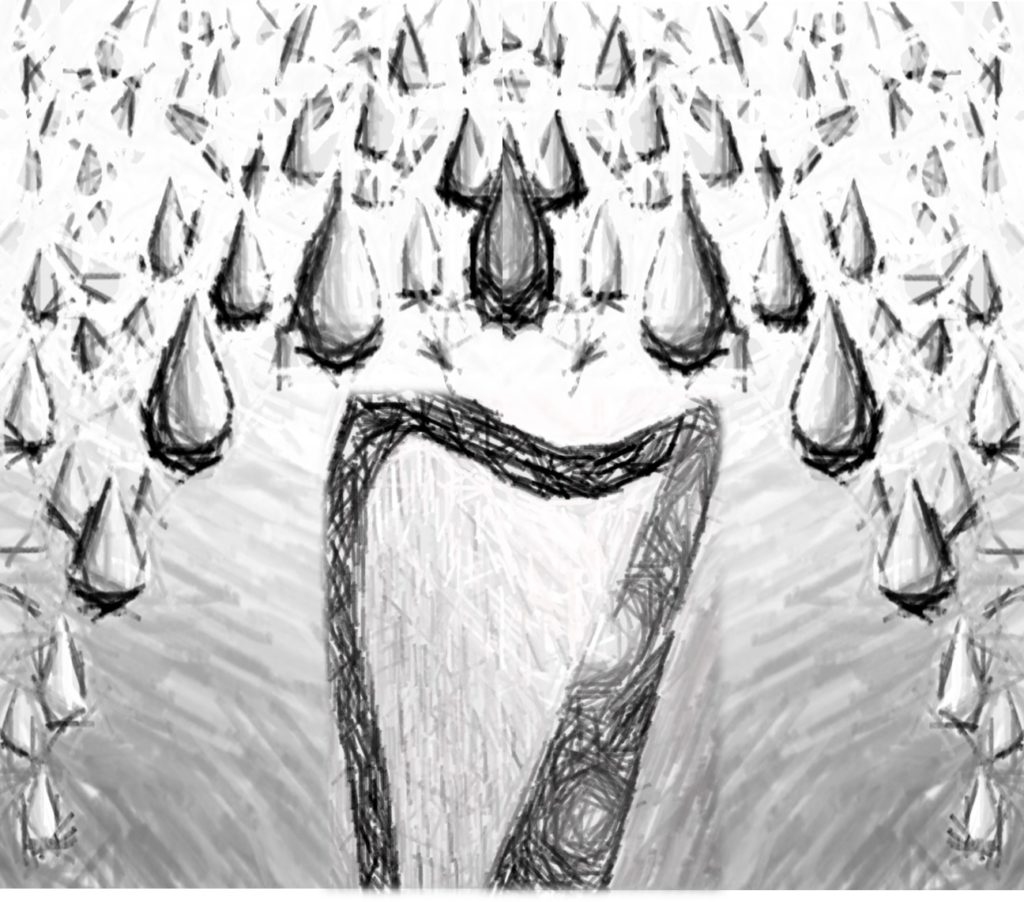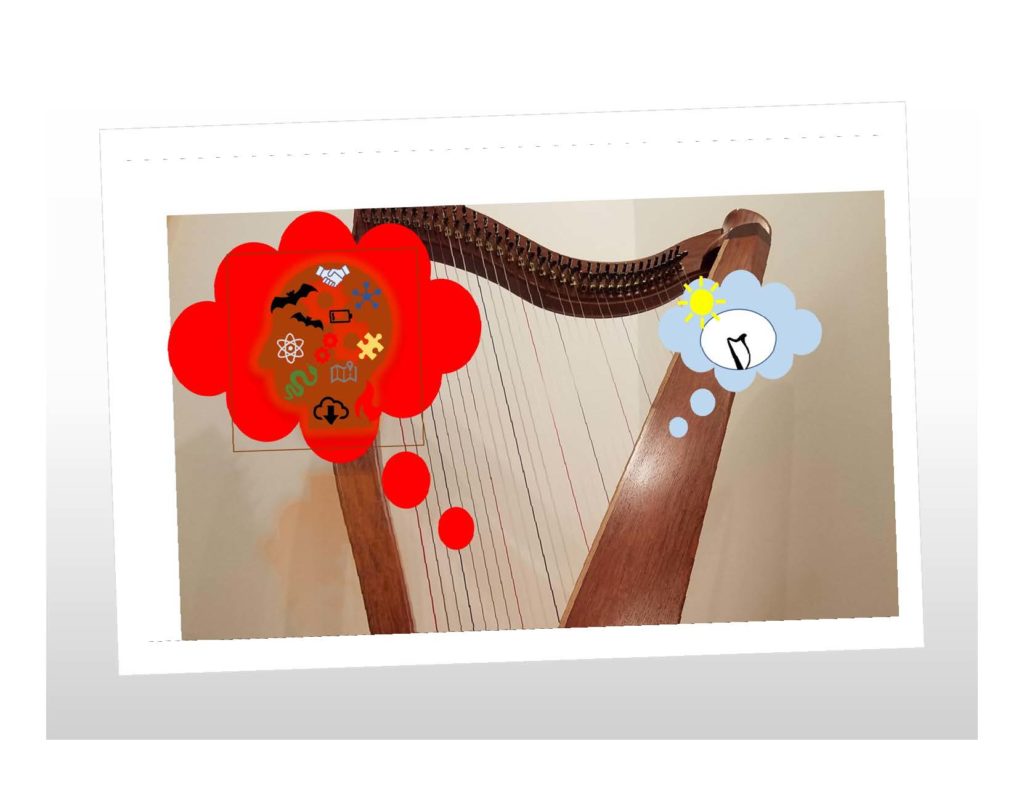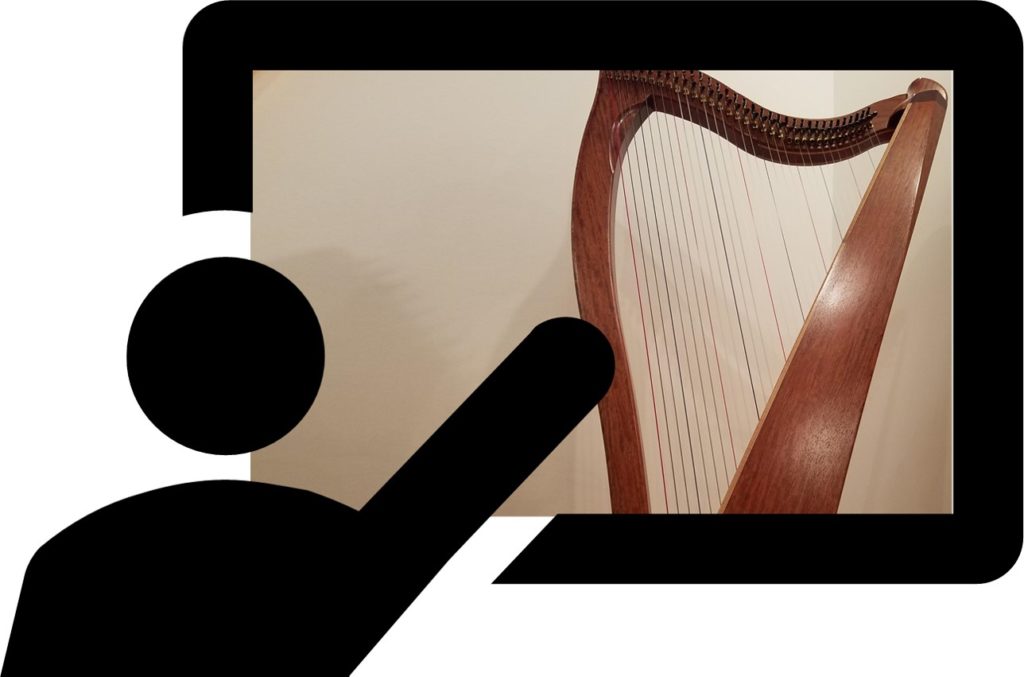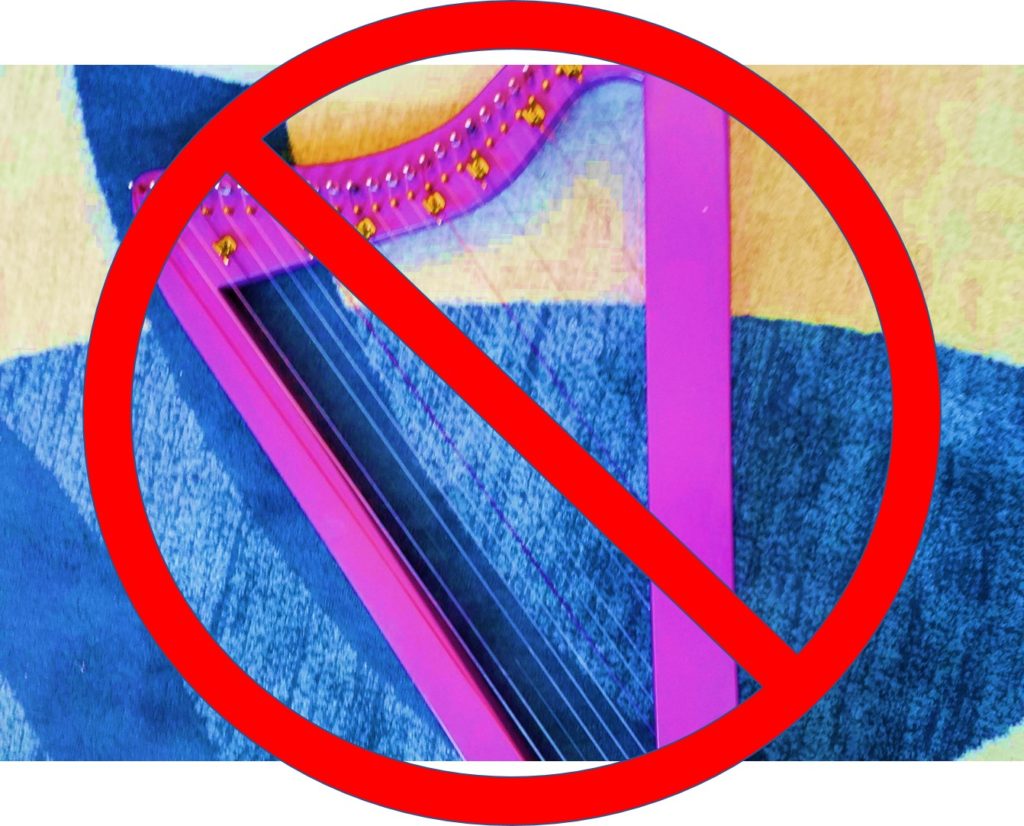So, you made it through Bootcamp Week One! If you were able to insert this into your practice – good for you! And remember that you are doing it for you, so even if you only get in a couple of days – you’re making a better you!
This week, you can continue the stretch, technique and practice element you learned last week, you can do this week’s set, or you could add them together. It’s up to you! 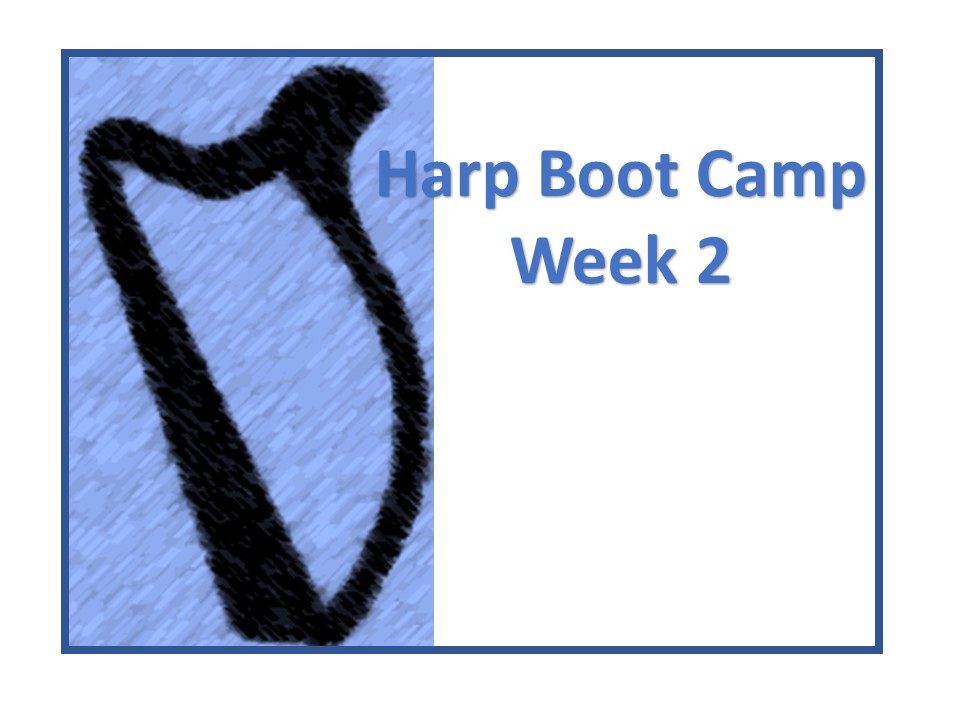 Stretch – Cozy Corner. Stand with both feet on the floor, weight balanced between them near an “outside corner” (the kind that point at you). You can also use a doorway. Keep yourself lifted, head up, back comfortable and straight, shoulders relaxed. With your arm out to your side, place your forearm on the wall. Slowly draw in a deep breath into your abdomen, hold for a moment and slowly lean into your corner, turn away, and let your breath out. Do this for a couple of breaths, and then do the other side. Be relaxed and be careful to be in control so you don’t hurt your shoulders. Do not stretch farther than your flexibility!*
Stretch – Cozy Corner. Stand with both feet on the floor, weight balanced between them near an “outside corner” (the kind that point at you). You can also use a doorway. Keep yourself lifted, head up, back comfortable and straight, shoulders relaxed. With your arm out to your side, place your forearm on the wall. Slowly draw in a deep breath into your abdomen, hold for a moment and slowly lean into your corner, turn away, and let your breath out. Do this for a couple of breaths, and then do the other side. Be relaxed and be careful to be in control so you don’t hurt your shoulders. Do not stretch farther than your flexibility!*
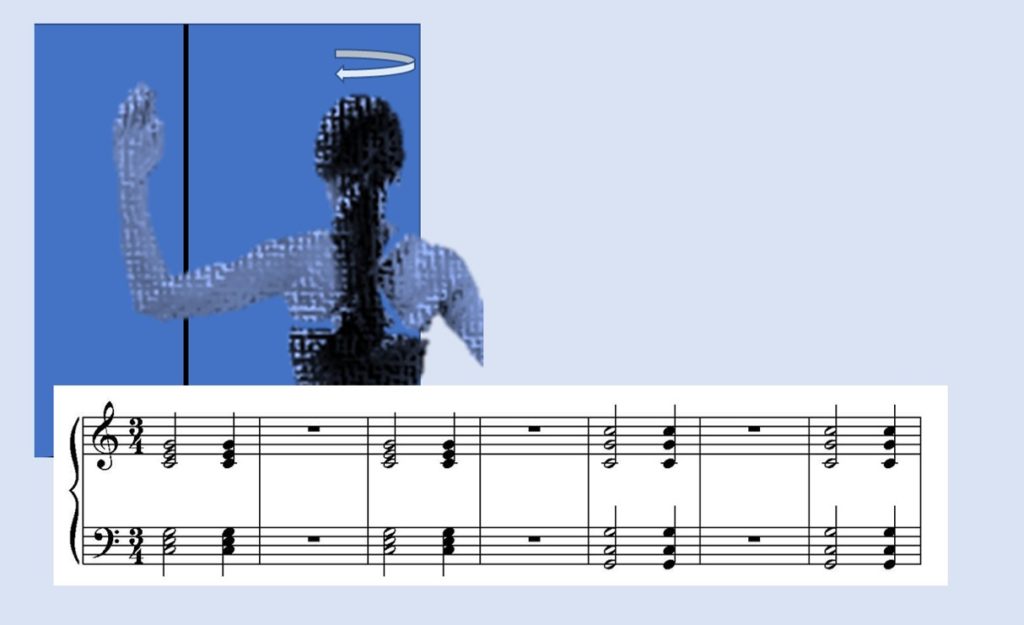 Technique – Placing. One challenging thing is to learn to land on strings that are already vibrating so as to stop them, but not too quickly! If you don’t stop the strings, you get horrible buzzes. But if you stop the strings too quickly you get noise. This week, to practice placing, we’re going to use chords. Start in your favorite major key and counting in 3. Wang off a really loud I chord on the 1 beat. Use the second beat to admire your handiwork (or to be slightly more successful, use the time to figure out your next move!). On the third beat, land back on that same chord – quietly, gently but firmly. Watch your fingering and use it for both the first and third beats. Play the chords you are comfortable with. Just beginning? Stick to I-III-V chords. More advanced? Do I-V-VIII chords. Really advanced – do something jazzy – but make sure the third beat is playing the same notes as the first! Work slowly and carefully to assure you’re actually stopping the strings like you mean to (don’t work on luck!). Once you’ve got the hang of it, work your way up the octave repeating the chords. Go slowly and carefully. No buzzing, no misses (errors), stay on the beat, make smooth transitions, and mind your hand and arm position and that your wrists are in a neutral position. No tension! Keep your shoulders down and your head up. Start with each hand and when these are good, go on to both hands. If this is too easy, you know the drill – place your hands and then close your eyes. Still too easy? Start with your eyes closed to find the start point. Again, do not accept a marginal effort – “good enough” isn’t. Do the work – for you. Not getting what you expect? Slow down more. Go only as fast as you can do it correctly. Do not rush. Remember to enjoy the sound, to feel the harp, and enjoy the experience! This can be difficult, so don’t sweat it if it takes a little practice – you will get there if you keep working on it!
Technique – Placing. One challenging thing is to learn to land on strings that are already vibrating so as to stop them, but not too quickly! If you don’t stop the strings, you get horrible buzzes. But if you stop the strings too quickly you get noise. This week, to practice placing, we’re going to use chords. Start in your favorite major key and counting in 3. Wang off a really loud I chord on the 1 beat. Use the second beat to admire your handiwork (or to be slightly more successful, use the time to figure out your next move!). On the third beat, land back on that same chord – quietly, gently but firmly. Watch your fingering and use it for both the first and third beats. Play the chords you are comfortable with. Just beginning? Stick to I-III-V chords. More advanced? Do I-V-VIII chords. Really advanced – do something jazzy – but make sure the third beat is playing the same notes as the first! Work slowly and carefully to assure you’re actually stopping the strings like you mean to (don’t work on luck!). Once you’ve got the hang of it, work your way up the octave repeating the chords. Go slowly and carefully. No buzzing, no misses (errors), stay on the beat, make smooth transitions, and mind your hand and arm position and that your wrists are in a neutral position. No tension! Keep your shoulders down and your head up. Start with each hand and when these are good, go on to both hands. If this is too easy, you know the drill – place your hands and then close your eyes. Still too easy? Start with your eyes closed to find the start point. Again, do not accept a marginal effort – “good enough” isn’t. Do the work – for you. Not getting what you expect? Slow down more. Go only as fast as you can do it correctly. Do not rush. Remember to enjoy the sound, to feel the harp, and enjoy the experience! This can be difficult, so don’t sweat it if it takes a little practice – you will get there if you keep working on it!
Practice element – Reading. This week practice reading. One of the great things about reading is that you can do it anywhere! And if you practice reading enough – when you’re not at the harp, you’ll still be able to “hear” the music in your head as you read. If you’re just learning to read – PLEASE BE KIND TO YOU! Think back to when you learned to read words (or think about a child you have witnessed struggling to learn to read). It was difficult – learning to tell one squiggle from another, and learning what each specific squiggle meant was hard. And you spent a lot of time learning to tell them apart and remembering what they meant – and sounded like. This is just like that! And, if you’ve had some time away from the paper, you might find that you’re a little rusty at reading – and need to “sound out” some of the squiggles. There are a number of ways to practice your reading. For this week, select music that is not familiar, but is at your level of proficiency. Sit at the harp and do-not-play! Rather, glance at the page and randomly select a squiggle. Then play that squiggle on your harp. The point here is not to learn the piece but rather to practice identifying the squiggles and their meanings. If there are lever (or pedal) changes – touch the appropriate lever. If there’s a middle C indicated, touch the middle C. Don’t just pick the easy ones – if there are ledger lines and you’re not good at that, work on those. Spend time reading the music and identifying where the squiggles go. You can also play the note so you can learn what each squiggle sounds like. If possible, spend 15 minutes each day practicing your reading. With that slow steady approach, you will be able to read more accurately and more quickly. Use your timer to assure you only spend 15 minutes. By squiggles, I’m sure you know that I mean notes, but also any of the other markings – accidentals, dynamics, key signatures, etc – you need to practice it all to get really smooth.
Keep at it again this week and you will see improvement. If you can practice both week’s activities, you’ll see that last week’s seem much easier this week! Just imagine what’ll happen next week!
*Remember that I’m not that kind of doctor, so please be careful, work within your own abilities (which isn’t to say don’t stretch yourself but also, don’t hurt yourself!). Be careful and only do what you can do. This blog provides general information about trying to stay health and other subjects related to playing the harp. All the content provided in this blog, and in any linked materials, is not intended to be, and should not be construed to be, medical advice. If you have a medical concern, consult with an appropriately-licensed physician or other health care worker. Never disregard professional medical advice or delay seeking it because of something you have read on this blog or in any linked materials. If you think you may have a medical emergency, call your doctor or 911 immediately. The views expressed on this blog and website have no relation to those of any academic, hospital, practice or other institution with which the author is affiliated. Don’t be thick – these are just suggestions – take care of you!


